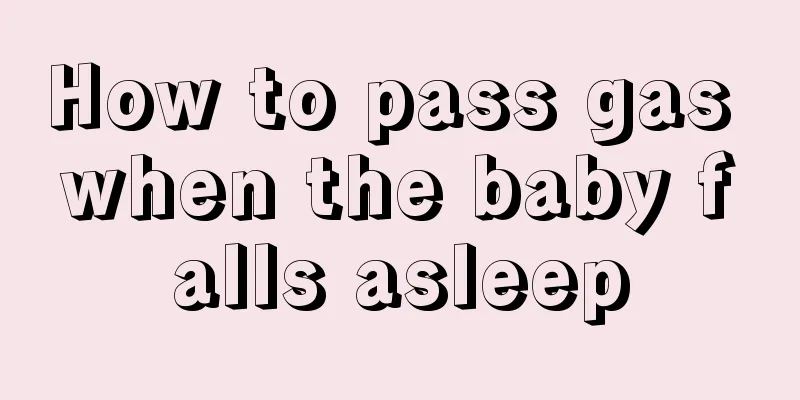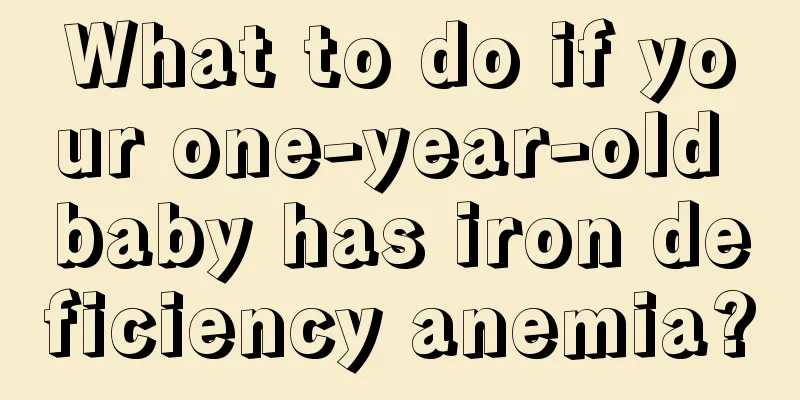What to do if your baby's fontanelle is sunken

|
Babies have two fontanelles. One is at the front of the head, which usually closes at 1 to 1.5 years old and is called the anterior fontanelle. The other is at the back of the head, which closes at the latest at 2 to 4 months and is called the posterior fontanelle. The closure and shape of the fontanelle can reflect the baby's health. A sunken fontanelle is a reflection of the baby's stable health. There are many blood vessels in the fontanelle and other parts, so it is normal for the fontanelle to jump or sink. 1. A sunken fontanelle is most often caused by dehydration in the baby's body. For example, if the baby does not replenish water in time after diarrhea, the anterior fontanelle will become sunken. In this case, the baby needs to be given fluids immediately. 2. In order to reduce intracranial pressure, a large dose of dehydrating agents was used, causing the anterior fontanelle to become sunken due to dehydration. The baby's body should be replenished with water in time to prevent excessive dehydration from causing metabolic disorders in the body. 3. Malnourished and thin babies often have a sunken anterior fontanelle. Although the baby's fontanelle is not big, it is an important window reflecting the baby's physical health. By observing this small window when the baby is less than 1 year old, many diseases can be detected early, allowing the baby to be diagnosed and treated early. Therefore, mothers should know more about the normal development process of the baby's fontanelle and the abnormal phenomena that are prone to occur. 1. Under normal circumstances, the baby's anterior fontanelle is approximately 1.5×2cm in size, and appears to be flat or slightly concave. 2. In the first few months after birth, the anterior fontanelle will slightly increase as the head circumference gradually increases. After the baby is 6 months old, it will gradually become smaller due to the gradual ossification of the skull. 3. The posterior fontanelle is very small and generally not noticeable. It usually closes 2-3 months after the baby is born. The baby's fontanelle depression usually occurs in the anterior fontanelle. In addition to the depression phenomenon, the fontanelle may also appear bulging, enlarged, smaller, prematurely closed, or late closed. Parents should remain calm. Compared with other symptoms, depression is relatively easy to solve. Parents should pay attention to their baby's diet and water absorption, and hope that all babies can have a healthy body. |
<<: How many tips do you know about weaning your baby?
>>: What to do if a child has a cough and tracheitis
Recommend
How to determine whether the fontanelle is sunken
Expectant fathers and mothers will be more famili...
Does a six-month-old baby need to take a bath every day in winter?
Six-month-old babies already have slight cognitiv...
What are the dangers of a newborn choking on water?
Since many organs of newborns are not fully devel...
Why do newborns make throat sounds when feeding?
Newborns will unconsciously make some abnormal no...
Sleep myoclonus in children
Sleep myoclonus in children is a type of epilepsy...
What causes bloody stools in three-year-old children?
As babies grow, they will have problems of one ki...
The harm caused by excessive zinc supplementation to children
In order to ensure the healthy growth of their ch...
What to do if your 8-month-old baby coughs and has phlegm
When an eight-month-old baby starts coughing and ...
What should I do if my child has a fever at night?
Every child is a person who makes parents worry. ...
Why does my baby have a fever? The reason is so complicated
Babies are very prone to high fevers, and the rea...
How to correct baby's pigeon-toed feet?
Nowadays, people pay much attention to their pers...
What are the development indicators of a 16-month-old baby?
The baby is the future of mom and dad, the contin...
What causes alopecia areata in children?
The healthy growth of children is very important....
Can children eat black fish?
Because children's stomachs and intestines ar...
What should I do if my child always has a hunchback?
For parents, the healthy growth of children is of...









